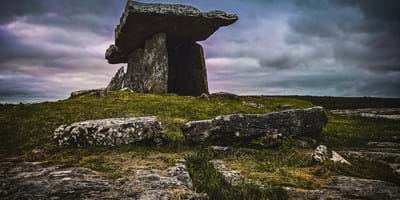We saw that the Bible presents the God of Israel as a God who existed eternally and He is a God who explains reality. This article focusses on another proof:
The God of Israel is distinct culturally
The God of Israel is presented in the Bible as a God of universal love and sovereign rights. He is not a limited, local deity who only cares about his own wee parish and people. He is interested in blessing for the whole world, and it was for that reason He called Abram (later renamed Abraham):
Now the Lord had said to Abram: “Get out of your country, from your family and from your father’s house, to a land that I will show you. I will make you a great nation; I will bless you and make your name great; and you shall be a blessing. I will bless those who bless you, and I will curse him who curses you; and in you all the families of the earth shall be blessed.” Genesis 12:1-3
God’s choice of Abram was with a view to blessing for all mankind. That concern for all humanity is something that makes the God of Israel different from the other deities.
There is another experience in Abraham’s life that distinguishes the God of the Bible from the gods of the nations – the time when Abraham was called to sacrifice Isaac. Abraham was from the city of Ur, a city that had a Great Death Pit where victims of human sacrifice were buried.[1] Coming from such a background, Abraham would not have been shocked at the concept of human sacrifice. The point of God calling Abraham to sacrifice Isaac and then stopping it (aside from it being a remarkable picture of the sacrifice of Christ) is to show that God isn’t like the tribal deities – He doesn’t accept human sacrifices.
The gods of the nations reflected the morality of the nations because they were inventions of those nations. The God of Israel never reflected the morality of Israel. He imposed a law upon them that they continually failed to keep – He gave a standard they never met. He was continually condemning them for their immorality and never accommodating Himself to it. It would be a very strange nation indeed that would invent a law that only condemned them.
Vishal Mangalwadi points this out in The Book That Made Your World. He speaks about his spiritual journey and how he came to have confidence in the divine source of Scripture. He said, “Our folk history told us of great and glorious rulers. This Jewish book, in contrast, told me about the wickedness of Jewish rulers. Why?” He says that he thought, “The priests must have written the Bible…But no. The Bible said that the priests – in fact, the entire religious establishment of the Jews – became so corrupt that God destroyed his own temple and sent his priests into slavery.” He then thought that the poor and oppressed must have told these stories, “But no, this Jewish book seemed more anti-Semitic than almost anything Hitler had penned. These Jewish scriptures (the Old Testament) condemned the Jews as corrupt, covetous, crooked, stupid, stiff-necked, and rebellious.” He went on, “In that case, I thought, the Bible had to be the work of prophets. They love condemning everybody. Another look…however, showed that most of the prophets were false prophets and the good ones lost out.” His conclusion was that the Bible is not mere literature but revelation. It condemned everyone. It wasn’t the product of any culture or class. This is a key point – when Israel did follow the surrounding cultures, the Bible didn’t. There was no lowering of the standard or relaxing of the requirements. The entire nation was corrupted, but the revelation of God never changed. Throughout all of Scripture, with passing centuries, varying circumstances and shifting standards, God is the same.
I think this is a powerful indication that the God of the Bible is not a human invention.
Notes
[1] https://www.world-archaeology.com/great-discoveries/royal-tombs-of-ur/
Photo credit: Wikimedia





























